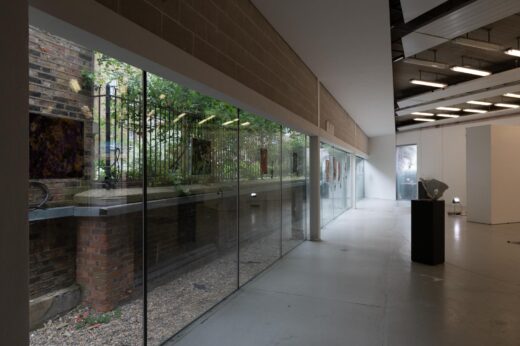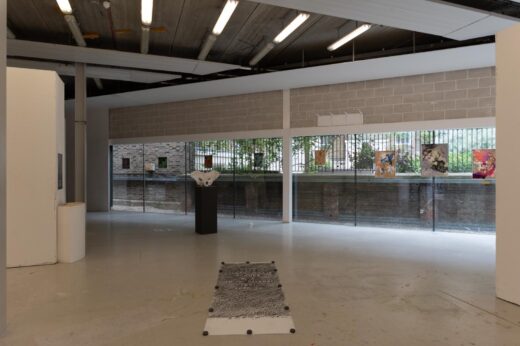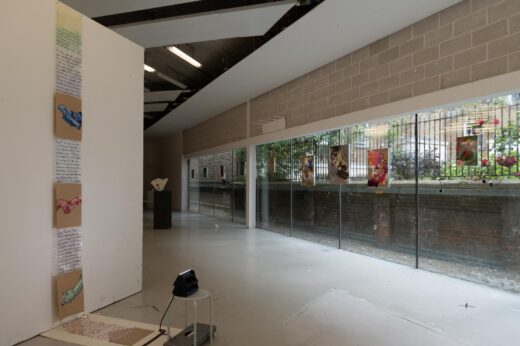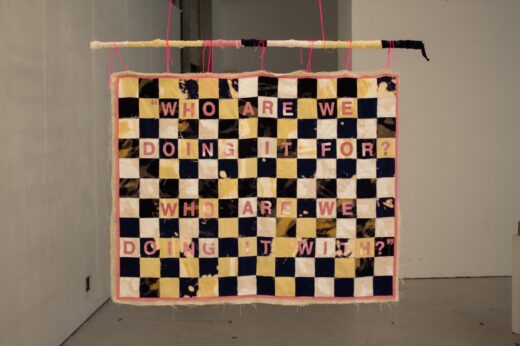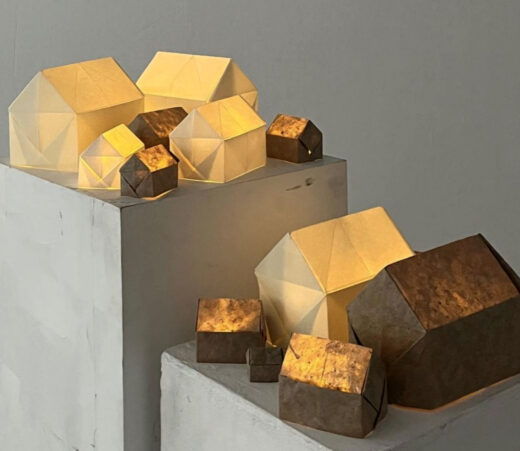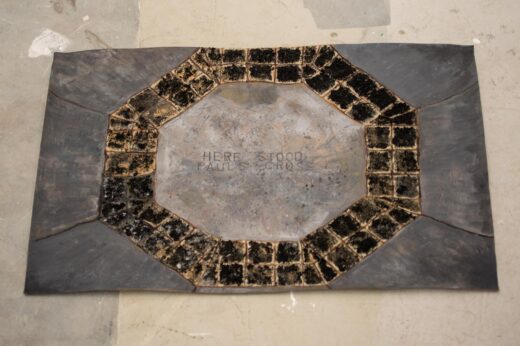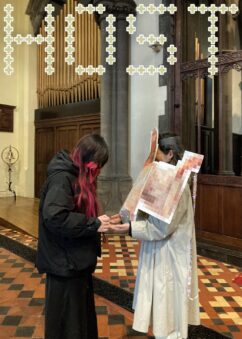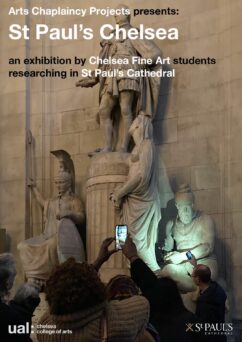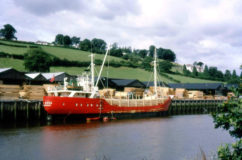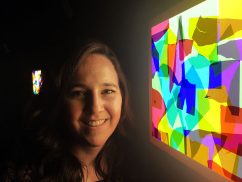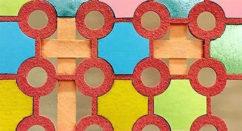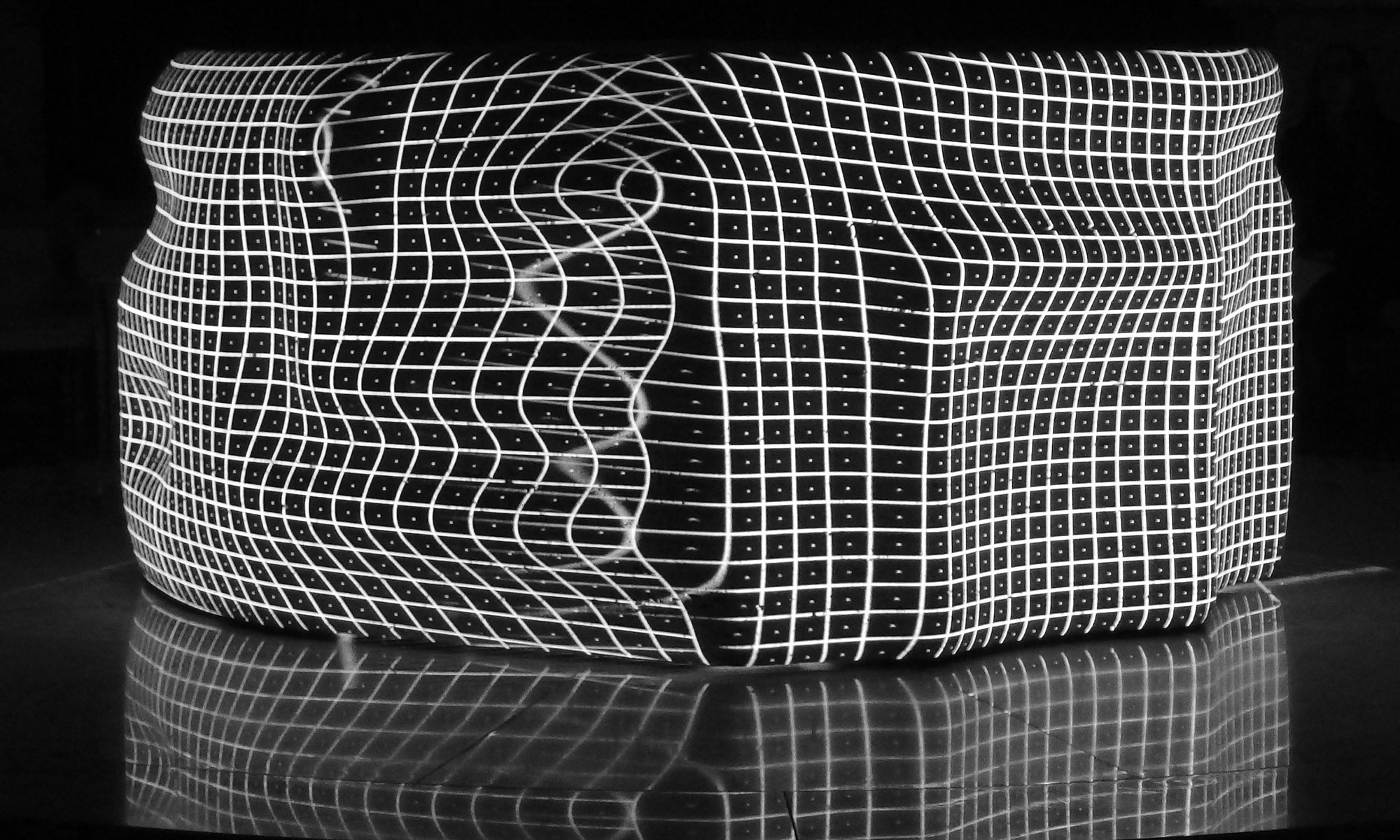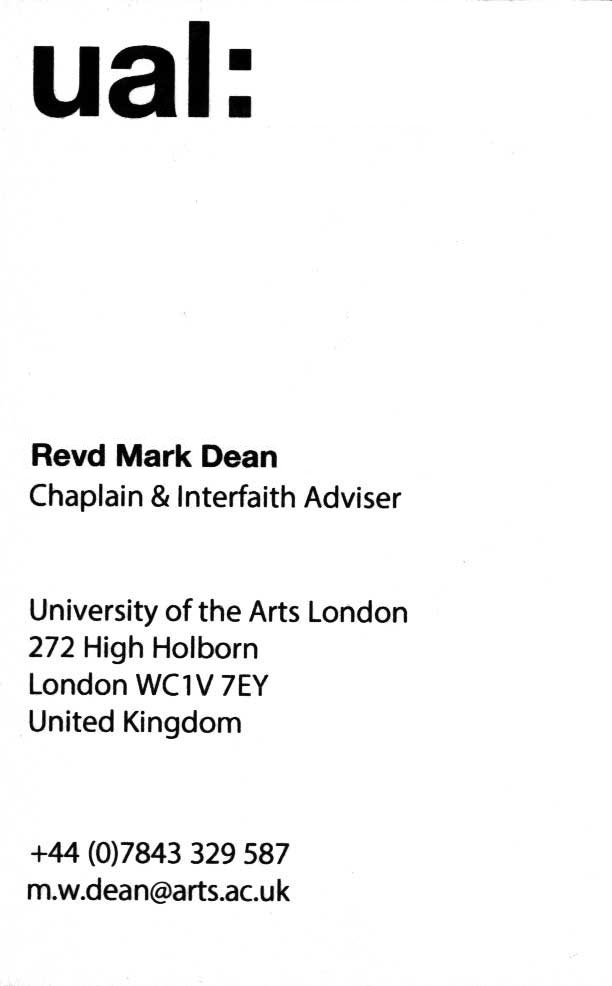St Paul’s Chelsea
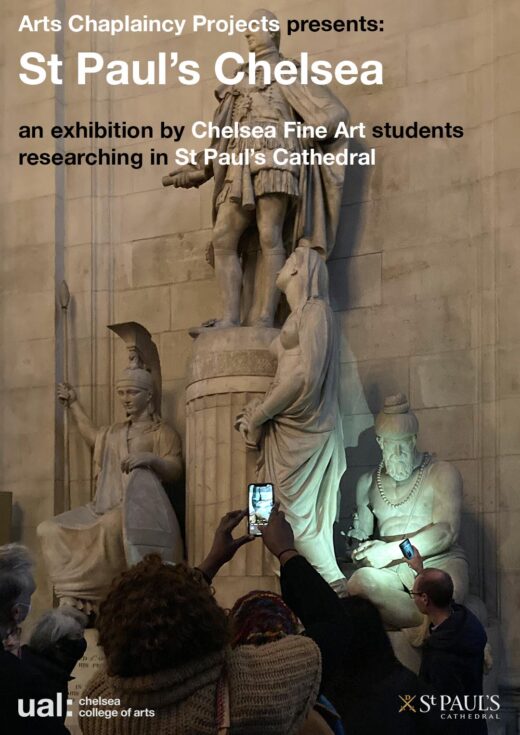
St Paul’s Chelsea is an open research project with students drawn from the Black Lives Matter discussion forum at UAL Chelsea working with the art collection at St Paul’s Cathedral, which includes many historical monuments from the period of Empire. Participants have constructively and critically engaged with this legacy within its contemporary context, led by Mary Evans, artist and Chelsea College of Arts BA Fine Art course leader, working with Dr Paula Gooder, theologian and Canon Chancellor of St Paul’s Cathedral, and Simon Carter, Head of Collections and researcher for Pantheons: Sculpture at St Paul’s Cathedral, c.1796-1916. The project is coordinated by Mark Dean for Arts Chaplaincy Projects, and is bound by a commitment shared with the University and the Cathedral to equality, diversity, and social justice, especially in matters of education and community engagement.
The first phase of the project culminated in an exhibition featuring works by Aya Al-Thani, Caroline Ashley, Kimmo, Sachiko Shimojo, Simon Barclay, Sofiya Marynyak, Synshar Pde, Yayu Amanda Williams
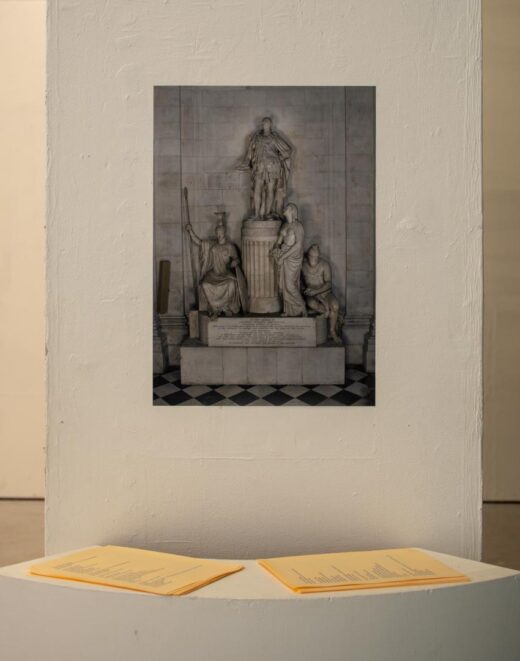
They’re not even nice legs.
Well, they’re nothing special, at least. Nothing that doesn’t
get old after a while.
Knees, calves, shoes.
I don’t like the shoes
the flowers are tacky
and this man could use a bit of a heel
if you ask me.
That’s why they put him
on this huge pedestal
It’s because he’s so short.
I’ve been told that there’s a very handsome man behind me
nice beard and everything
but I can’t turn my head.
I’ve heard that his body is to die for
too.
It’s okay, you all enjoy
I’ll just stare at these hideous shoes.
They must be women’s shoes.
Maybe he has to wear women’s shoes
because he’s so short. I don’t even mind
if a man is short, but I can’t condone such shoes.
Even I would feel too ashamed to wear something like that
I would say to myself
woman
act your age.
I would have to say it to myself
of course
because I can’t say it to anyone else.
My lips don’t move but they don’t have to move
for me to speak to myself
I also sing to myself
interview myself
and even yell at myself
I’m very interesting in interviews so it’s a shame really
that I am not famous
but Women’s Shoes is.
I don’t like feet very much.
I know some do
and to each his own
but not for me, thank you very much.
Maybe I wouldn’t mind them if I could look at anything else.
Sometimes I hear singing, but I can’t turn and watch.
Women’s Shoes can see everything – he’s in a perfect spot.
Apparently, the gentleman behind me can only see
his own lap but he is still luckier than me. In fact,
I don’t think anyone else in this place
maybe even in history
has ever been worse off than me. That is not self-centred to say
and I challenge anyone that disagrees with me
to take my place
we’ll see how unfortunate you are then.
I hear a lot of speaking as well
words like
God
Heaven
and Israel.
hear everything
and I know everything
but I see nothing.
They say the greatest sculptors merely
find the statue in the stone but I don’t think I was in there
don’t feel found.
My only hope is that one day the man with the chisel
comes back and changes those shoes
or just chips the flowers off, at least.
Aya Al-Thani
Women’s Shoes
Text, photograph
Is there such a thing as a neutral statue? Can statues of commanders and colonisers erected in a place of worship be considered historical artefacts? In Islam we have concerns about idolatry, or misdirecting one’s praise towards an object or representation; however it is prohibited to create a likeness of The Prophet Mohammad (PBUH) as it is seen as a dire show of disrespect.
The monument in memory of Charles Marquis Cornwallis, the Governor General of Bengal features three unnamed figures, one of which is a woman that is gazing up at his legs. I combined research into Islamic teachings, my own cultural background, and the personification of statues in literature (Pygmalion, The Happy Prince) to form an approach to this monument and the work it inspired.
Caroline Ashley
Who are we doing it for?
Textile
“Who are we doing this for? Who are we doing this with?” Zoe Whitley from the Chisenhale Gallery asked this question in an online conversation when thinking about attracting and representing diverse audiences in the art world.
The process of dismantling, reworking and restitching of old fabrics; that have protected and clothed, acts as a metaphor for the histories and legacies of the British Empire and the iconic symbol of St. Paul’s own need to repair and heal its own past. Change requires raising questions, to provoke thought, pondering, to change minds, and perspectives.
Kimmo
Shrine you dedicated to the pursuit of war
Plaster
In response to the Pantheon’s place in a history of imperialism, Kimmo contemplates how a monument of heroism may take place without the imposed principles of any state, and how it might recognise courage in the individual.
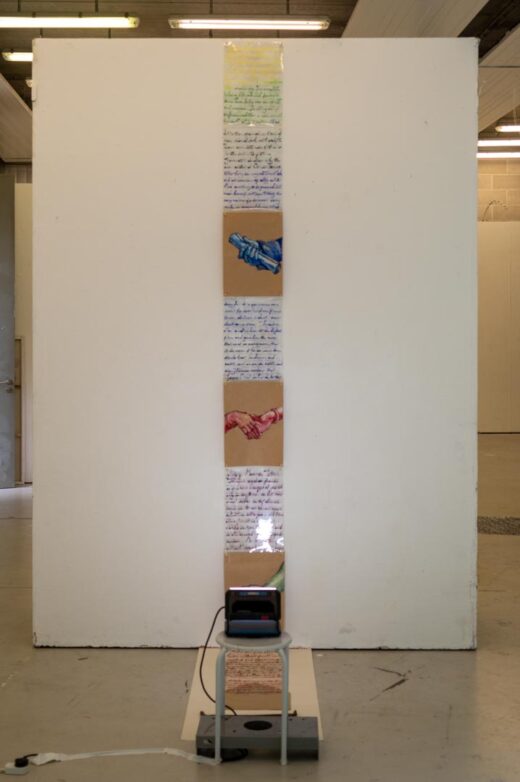
Sachiko Shimojo
Letter
Watercolour on craft paper, water ink on acetate film
The text is taken from St Paul’s letter to the Philippians; the images are of the hands in the monument to Charles Marquis Cornwallis.
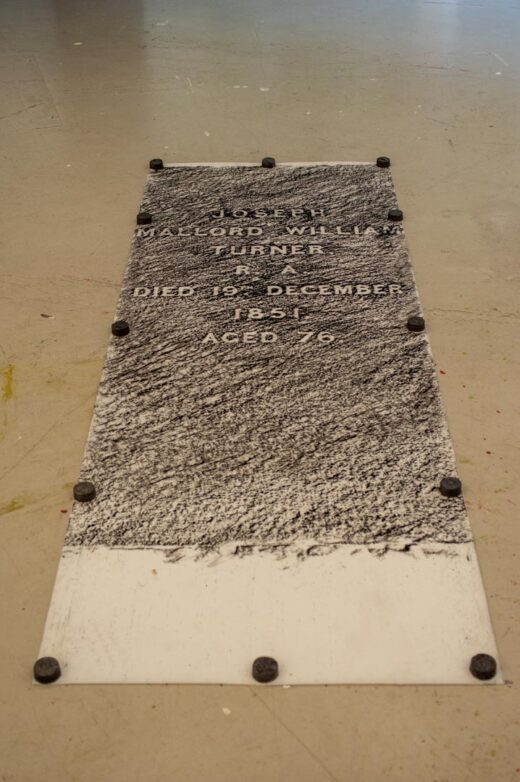
Simon Barclay
Turner
Wax crayon on photographic paper, lead
I find myself in shock; what a dilemma! How has it come to this, that monuments should stand for all eternity. My response to the St Paul’s question might be that the final resting place is a monument, no more no less. This is perhaps why I chose the artist Turner’s tomb, and the lesson I have learned through this process is that with the right approach these monuments are not untouchable, and positive interactions can take place, whatever they might be.
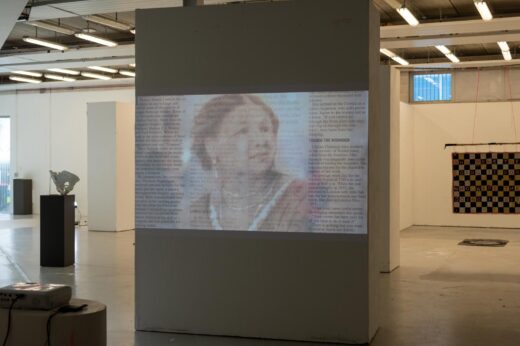

Sofiya Marynyak
The missing cannot hear and the forgotten cannot speak
Video projection (10 min duration), photographs
The work is an attempt to understand who gets remembered and how, through recording and spending time inside St Paul’s Cathedral. It looks at the current interactions between visitors, the monuments and the space itself which is still an active church. The video is slow, meditative and hazy as both physical (on-site) and metaphorical (research) edges get blurred. What connections lie heavy between the marble, stone and our own collective memories? While relics of the Empire chase(d) commemorative glory, where does that leave the rest of us? There is a ghostly echo in the cathedral, as those forgotten cannot speak and the missing cannot hear.
During cathedral visits for recording, I was frequently asked where various monuments were, and a pattern emerged. The ones mentioned most frequently were Florence Nightingale and Christopher Wren. They are almost at opposite ends, and I spent the majority of my time filming between the two. Also at opposite ends, are Nightingale and the war correspondents section, specifically Sir William Howard Russel. I found out they are directly connected, as she quotes Russel as the reason behind her travels to Crimea. This further led me to find another missing link between the two — Mary Seacole (there is a monument to her outside St Thomas’ Hospital, which was controversial and met with criticism both for and against its placement). The video, in part, is a glimpse into said research — how is each one remembered? Does their physical presence (in the form of their monuments) change anything? And how can they be placed into a wider conversation about remembrance, biases, historical research and contemporary response?
Synshar Pde
I Have Decided To Follow Jesus
Monpa handmade paper and conventional mass produced paper, LED candlelights, speaker
In many religions, particularly Christianity, martyrdom is necessary and plays a big role in how many people have converted beliefs. These people become sacrifices to bring in faith and they get perceived as only sacrifices. So many sacrifices and so many unknown deaths, that St. Paul’s Cathedral requires more space for all the people that died so many will come to faith. After missionaries completed their missions, they left with satisfaction without looking back at the problems that would arise.
Christianity divided the people in my tribe, the Pnars, who mostly reside in the small town of Jowai amongst the hills of Meghalaya, India, in which state the population is over 70% Christian. With Christianity came separate neighbourhoods, a diluted culture, and therefore a loss of identity.
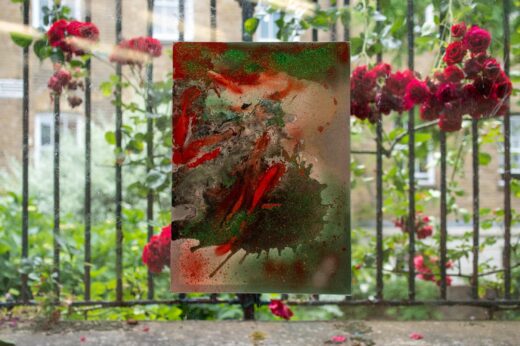
Yayu Amanda Williams
Celestial Bliss
Mixed media on canvas, rope
Bring to the forefront things forgotten
Collaged tissue paper, acrylic paints and acrylic medium
What does music do for us? How important is music in our life? It provides a total brain workout. Research has shown that listening to music can reduce anxiety, blood pressure, and pain as well as improve sleep quality, mood, mental alertness, and memory. Music can transform the emotions and feelings of the people within no time. It can lessen the stress, pain, struggle, distraction and bring positivity and calmness in our daily life. Music holds the power to bring people together in different ways. Music is a way of expressing myself and being able to relate to other people.
Entering St Paul’s Cathedral, the main things that have always captivated me are the exquisite beauty it exudes and the interesting perspective it commands, alongside the idea that each time there will always be something new to learn. Building on this I decided to capture the beauty not just through the structure or materiality of the building, but its most recognisable sounds/music. Hence I created a 13-piece series of reactional art works representing the Music for the Royal Occasion: St Paul’s Cathedral 1981 (Barry Rose). The freedom and trance-like methodological way these pieces of works are produced are enriching to both my soul and practice.
The second piece is centred around the hidden/forgotten history of St Paul’s Cathedral. On the north-east corner of the churchyard is the placard where Paul’s Cross stood, originally a public meeting place of high significance and famous public executions. The idea was to recreate this placard – named Unhidden – where all can see and appreciate its significance.

